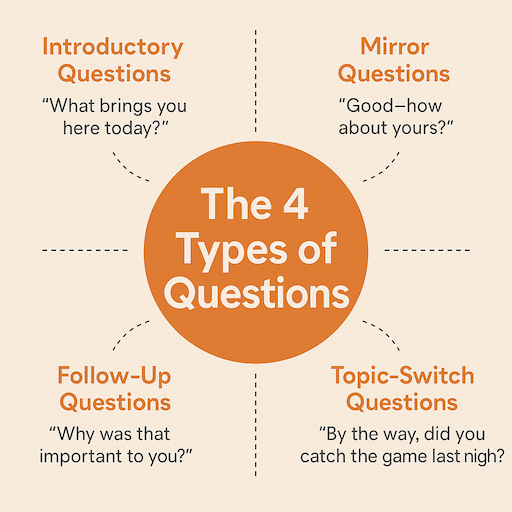May09

Customer experience (CX) transformation has become an essential strategy for businesses aiming to thrive in today's competitive market. However, the journey to achieving a seamless customer experience can be riddled with unforeseen challenges. These obstacles can not only derail your progress but also lead to significant setbacks. Here's an overview of some common hurdles in the CX journey and why it's crucial to stay on track.
A change in leadership can disrupt ongoing initiatives. New leaders may have different priorities or lack a thorough understanding of the existing CX strategy. This can lead to a loss of momentum, with previous efforts potentially getting sidelined or reimagined in ways that don't align with the original vision.
Management's focus can shift due to emerging trends or external pressures. For example, sudden emphasis on diversity, equity, and inclusion (DEI), environmental, social, and governance (ESG), or sustainability can divert attention from CX projects. While these are important areas, they may lead to reallocation of resources away from CX if not managed carefully.
When the CX Head or other key team members leave, the entire transformation effort can go haywire. New hires might not have the same vision or experience, leading to a loss of continuity. It takes time to rebuild team cohesion and get everyone on the same page.
Even with the best intentions, budget cuts or financial restructuring can impact CX initiatives. Without adequate funding, projects can stall or be abandoned, leaving customers with a fragmented experience.
When a company is bought over by investors, or undergoes restructuring, uncertainty looms. Employees might be anxious about their jobs, and CX initiatives can take a backseat while the new structure settles. This uncertainty can cause a ripple effect throughout the organization, affecting morale and productivity.
Delays in CX implementation can result from a variety of factors—bureaucracy, waiting for approvals, or even external events like a pandemic. When progress slows down, employees can become disengaged, leading to a drop in enthusiasm and a loss of focus on customer-centric objectives.
Natural disasters, pandemics, wars, or other external crises can significantly impact CX transformation. These events can lead to operational disruptions, forcing companies to prioritize immediate concerns over long-term CX goals.
Breaking down departmental silos is often a major challenge. When departments operate independently without clear communication channels, CX initiatives suffer. Collaboration and cross-departmental alignment are crucial for a successful transformation.
Bringing in new consultants or sudden changes in consulting partners can cause disruption. Different consultants may have varying approaches to CX, leading to inconsistency and confusion. This can affect the overall CX strategy and its implementation.
In some organizations, top management must refer everything to a parent company, creating bottlenecks in decision-making. These delays can hamper the timely execution of CX initiatives and frustrate employees who are eager to move forward.
Employees and managers might resist new ways of working, especially if they are not involved in the change process. Resistance can lead to delays, poor implementation, and a lack of enthusiasm for CX initiatives.
CX transformation should be driven by data and insights. Companies that fail to measure and analyze customer feedback or track key performance indicators (KPIs) may not understand where improvements are needed.
Employees need to be trained to understand and deliver on the CX vision. If they aren't equipped with the right skills and knowledge, they may not be able to meet customer expectations.
While technology can enhance customer experience, relying too heavily on it without considering human interactions can create a cold, impersonal experience. A balanced approach is key.
A successful CX transformation requires a culture that prioritizes customers. If the company culture doesn't support customer-centric practices, efforts to improve CX will likely falter. If profit and loss is the priority, then CX will face a challenging situation because we require time to show the ROI and result.
Customer Experience transformation is a complex journey that demands commitment, strategic planning, and a customer-centric culture. By understanding these common challenges and reasons for failure, companies can better prepare and address potential obstacles. A successful CX transformation requires cross-functional collaboration, clear communication, consistent strategy, and strong executive support. With these elements in place, companies can navigate the CX journey and create a seamless, memorable customer experience.
By Santhakumaran Atmalingam ACXS
Keywords: Customer Experience, Customer Loyalty, Design Thinking
 Successful Sales Are Not Built on Temporary Bonuses — And Beam Wallet Is Proof
Successful Sales Are Not Built on Temporary Bonuses — And Beam Wallet Is Proof Influence With Purpose: Why Thought Leaders Must Drive Sustainability
Influence With Purpose: Why Thought Leaders Must Drive Sustainability The 4 Most Underrated Coaching Questions (According to Harvard Research)
The 4 Most Underrated Coaching Questions (According to Harvard Research) Value Beyond Money: Synchronicity Economics & Reciprocal Exchange
Value Beyond Money: Synchronicity Economics & Reciprocal Exchange Clean Energy’s Inflection Point - Why the IEA and ECB Just Supercharged the Transition
Clean Energy’s Inflection Point - Why the IEA and ECB Just Supercharged the Transition